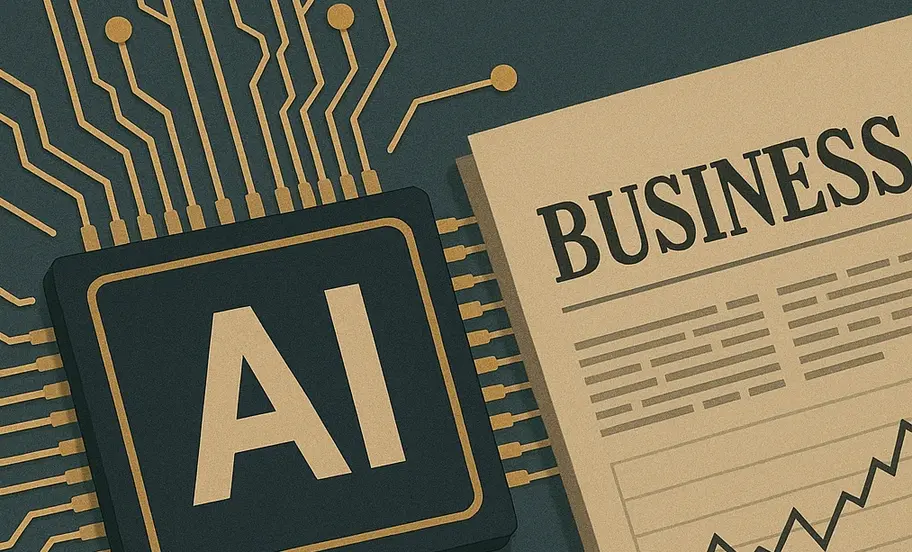If you’re invested in a fund that follows the S&P 500, about 40% of your money is effectively tied to the performance of just ten companies, most of which are deeply invested in AI development. This concentration has transformed what was once considered a diversified investment into something that looks more like a technology megacap fund, creating both opportunities and risks that many investors don’t fully understand.
The S&P 500 Transformation: From Diversified to Tech-Heavy
The S&P 500 is an index made up of publicly traded stocks of the 500 largest companies in the United States, with each company given a weighting based on its market size. However, the index has undergone a dramatic transformation, becoming increasingly concentrated in technology and AI companies. The S&P 500 is up more than 40% since October 2021, thanks largely to AI momentum.
This concentration means that the index is no longer the diversified investment vehicle it once was. Instead, it has become a technology megacap fund that tracks the performance of a handful of large companies rather than the broader economy. This shift has profound implications for investors who may not realize how much of their portfolio is actually exposed to AI and technology stocks.
The Nvidia Effect: One Company, Massive Influence
Nvidia has seen massive gains in the past couple of years, rising more than 230% in 2023 and 170% in 2024. It’s now more than 7% of the S&P 500, meaning that one company now carries as much sway in the S&P as the bottom 224 stocks combined. This level of concentration in a single company is unprecedented in the history of the index.
For many people, particularly investors in target date funds, a significant portion of their portfolio, especially equity, is in the S&P 500. Investors have gotten so used to the idea that the S&P 500 is a relatively low-risk way to invest, and it’s kind of obscured the fact that it’s a technology megacap fund today.
The Market Cap Weighting Problem: Bigger Companies, Bigger Influence
The S&P 500 is what’s called a market-cap-weighted index, meaning bigger companies have a bigger influence on how the index moves. Investors measure market capitalization by taking the number of shares a company has issued and multiplying it by its stock price. Therefore, if investors are driving up a stock’s price, that can increase the company’s market cap, which will then increase the company’s weight in the S&P 500.
This is one of the reasons why the S&P 500 has become so heavily driven by AI and tech giants. Nearly half of the S&P market cap has medium to high exposure to AI, according to Citigroup’s estimates. A lot of these companies in the index have put big bets on the emerging technology that’s set to come out, and the question is whether those bets will pay off.
The Concentration Risk: Top 5 Companies Control 30%
The top five companies alone in the S&P 500—Nvidia, Microsoft, Apple, Google (parent company Alphabet), and Amazon—represent nearly 30% of the index. Many people aren’t aware how their retirement portfolio performance or taxable account portfolio performance is really dependent upon the success of these five companies.
This concentration creates significant risk for investors who may not realize how much of their portfolio is tied to the performance of just a handful of companies. If these companies experience significant declines, it could have a devastating impact on investors’ portfolios, particularly those who are heavily invested in S&P 500 index funds.
Diversify Beyond the Big Five
Concentration risk doesn’t just affect portfolios—it affects hiring too. As capital and talent cluster around a few giants, smaller firms must compete smarter. Hiring exceptional analysts, strategists, and technologists can help your business build resilience beyond the Big Tech bubble.
Hire Top Finance & Strategy Talent Today →The Performance Gap: Median vs. Top Performers
Because of the surge in AI enthusiasm, the S&P 500 performance now increasingly tracks a few very large tech stocks. The median stock in the index has risen less than the top performing tech stocks over the last few years. The vast majority of the earnings and revenue growth that we’ve seen in the S&P 500 have come from tech and AI, more specifically.
This means that while the index appears to be performing well, the performance is not evenly distributed across all 500 companies. Instead, it’s being driven by a small number of large technology companies, creating a false sense of diversification.
The Diversification Illusion: 500 Names, But Not Really Diversified
The S&P 500 is still diverse in the sense that you still have 500 names that make up the index. However, it is much more concentrated than it has been throughout most of its history. There’s probably some level of truth in calling the S&P 500 just a mega-cap tech fund at this point.
But when you look at the broader economy now, so much of that is tech and tech-related. It’s becoming something that is all-encompassing. So having an index that is representative of our economy being so weighted toward tech and AI, you could actually argue, makes a lot of sense.
The Opportunity vs. Risk Debate
Some investors see this concentration as an opportunity rather than a risk. They argue that you want the average investor to have more exposure to tech rather than less. As one investor put it, “I’d rather be owning tech in the left lane of Ferrari, going 100 miles an hour than going 45 miles an hour in the right lane with value. You just think tech is where the growth is.”
This perspective suggests that the concentration in AI and technology companies is actually beneficial for investors, as it gives them exposure to the fastest-growing sectors of the economy. However, this view ignores the significant risks that come with such concentration.
The Diversification Solution: Equal-Weighted Indexes
One way to lower concentration risk is to change how you invest in the S&P 500 itself. The easiest way to maintain exposure to the S&P 500, but to lessen the overall exposure to tech and AI, would be to go with an S&P 500 equal-weighted index exchange-traded fund.
The difference is that instead of each member being weighted by their market cap, each one is weighted the exact same. So you don’t get these outsized influences from a handful of large names or one sector that is leading the returns. Being in the equal-weight index certainly has its drawbacks—when you have a bull market like we’re experiencing now, where the largest names are leading, you will miss some upside there. However, it does give you some level of reduced exposure in the event that the largest names are the ones that crack and go down.
The Broader Diversification Strategy
Financial experts recommend spreading risk across different company sizes, sectors, and regions of the world. That mix typically depends on an investor’s time horizon. Someone’s time horizon to retirement—10 to 15 years versus 30 years—can be quite significant, because that allows the investor who has a longer time horizon to take on more risk in their portfolio because they have much more time to recover if things do not go as they would like.
For investors who are 30-plus years to retirement, the focus should be primarily on stocks or equities, with probably more international allocation and more allocation to tech because it does typically have higher long-term performance. But for someone who is 10 to 15 years from retirement, the strategy should be more defensive, with allocations to more value-based companies, consumer staples, utilities, or stocks that provide more dividend income.
The Bottom Line: Know What You Own
The point is that this concentration in AI and technology companies is going to spread to the rest of the market, but it starts and ends with big tech. As AI continues to spread across different sectors and reshape the economy, investors may need to reevaluate what it means to diversify their portfolios.
It’s important for investors to understand, of the ETFs and mutual funds they have, what is their current exposure to AI. And if they buy stocks on top of that, are they comfortable increasing their exposure in that significant of a way? People just see sometimes funds or ETFs as like a blend of the portfolio, not realizing that they could be building more concentration and less diversification.
FAQ Section
Q: How much of my S&P 500 investment is actually in AI companies?
A: About 40% of your S&P 500 investment is tied to just 10 companies heavily invested in AI, with Nvidia alone representing 7% of the index.
Q: Why is the S&P 500 so concentrated in tech companies?
A: The S&P 500 is market-cap weighted, meaning bigger companies have bigger influence. As AI and tech companies’ stock prices rise, their market cap increases, giving them more weight in the index.
Q: What are the risks of this concentration?
A: The concentration creates significant risk because your portfolio performance depends heavily on just a few large companies. If these companies decline, it could devastate your portfolio.
Q: How can I reduce my AI concentration risk?
A: Consider an S&P 500 equal-weighted index fund, which gives each company the same weight regardless of market cap, or diversify across different sectors, company sizes, and regions.
The Path Forward: Informed Investing
The transformation of the S&P 500 from a diversified index to a technology megacap fund represents a fundamental shift in how investors should think about their portfolios. While the concentration in AI and technology companies may provide opportunities for growth, it also creates significant risks that many investors don’t fully understand.
The key is to be aware of what you actually own and to make informed decisions about your exposure to AI and technology companies. Whether you see this concentration as an opportunity or a risk, the important thing is to understand the implications for your financial future.




